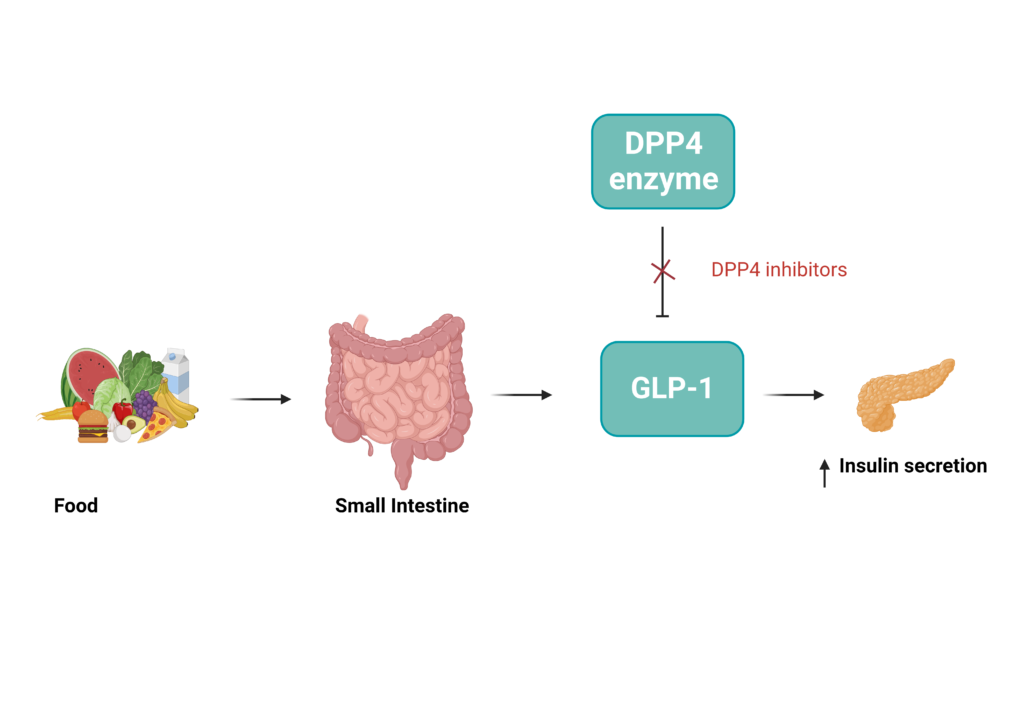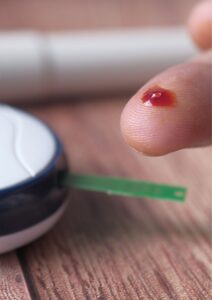Hello Science enthusiasts!
Here’s a riddle for you. What do a peptide hormone and a clever pharmacological approach have in common? Give up? They’re both players in the riveting scientific saga of managing Type 2 Diabetes Mellitus (T2DM).
Today, we’re diving into the world of incretin hormones – primarily Glucagon-like peptide-1 (GLP-1) and Dipeptidyl Peptidase-IV (DPP-IV) inhibitors, and their game-changing roles in treating T2DM. Buckle up, folks!
GLP-1: The Multitasking Hero
GLP-1 is a bit of a superstar. Synthesized in our gut’s endocrine cells, it shoots into action post-munching on that yummy burger. And what does this do-gooder do? Well, it balances blood glucose by encouraging insulin release from beta cells (those are the good guys producing insulin), slowing the food’s journey from the stomach to the small intestine, decreasing overall food intake, and toning down the levels of glucagon, a hormone that increases blood sugar levels. (Tasyurek et al., 2014)
But there’s a plot twist! This hard-working hormone has an incredibly short lifespan of less than 2 minutes (yes, you heard that right). It is rapidly degraded by the body’s DPP-IV enzyme, which limits its effectiveness in clinical applications (Manandhar & Ahn, 2014).
Enter: The Pharmacological Avengers
The story takes an exciting turn when scientific research swoops in with not one but TWO ingenious solutions to overcome GLP-1’s limitations:
- Synthesizing GLP-1 analogues that have a longer life, think ‘GLP-1, the Extended Version’.
- Suppressing the DPP-4 enzyme’s activity, thus enhancing our body’s levels of GLP-1 (Chon & Gauiter, 2016).
Today, six GLP-1 analogues have stepped into the T2DM treatment arena and have shown a plethora of beneficial effects from improving blood sugar control, reducing food intake, to even weight loss (Lepsen et al., 2015)
The DPP-4 Inhibitors: Holding the Fort
While GLP-1 analogues are fascinating, let’s not forget about the DPP-4 inhibitors (aka ‘gliptins’). These oral agents increase our endogenous GLP-1 levels by suppressing the DPP-4 enzyme. The result? Improved blood glucose control with low hypoglycemia risk doesn’t contribute to weight gain, a common side effect of many diabetes medications (Aschner et al., 2006, Malmgren & Ahrén, 2015).
Remember, with every superhero, there can be side effects, or ” supervillains’? Both GLP-1 analogues and DPP-4 inhibitors are generally well-tolerated, but nausea, gastrointestinal issues, and minor infections may crop up (Amori et al., 2007, Yazbeck et al., 2007, Richter et al., 2008).
The Final Act
In the battle against T2DM, GLP-1 and DPP-4 inhibitors have proven to be significant allies. While the story of these biochemical superheroes continues to unfold, it’s safe to say that their role in managing diabetes has brought us a giant leap closer to gaining the upper hand in this fight.
That’s all for today, folks! As always, we hope you found this blog post informative and fun.
We’ll be back soon with more exciting science simplified. Until then, stay curious, and stay healthy!
P.S. This blog aims to educate and share fascinating science stories. It’s not intended to provide medical advice or suggest specific treatments. Always consult your healthcare provider for personal medical advice.








